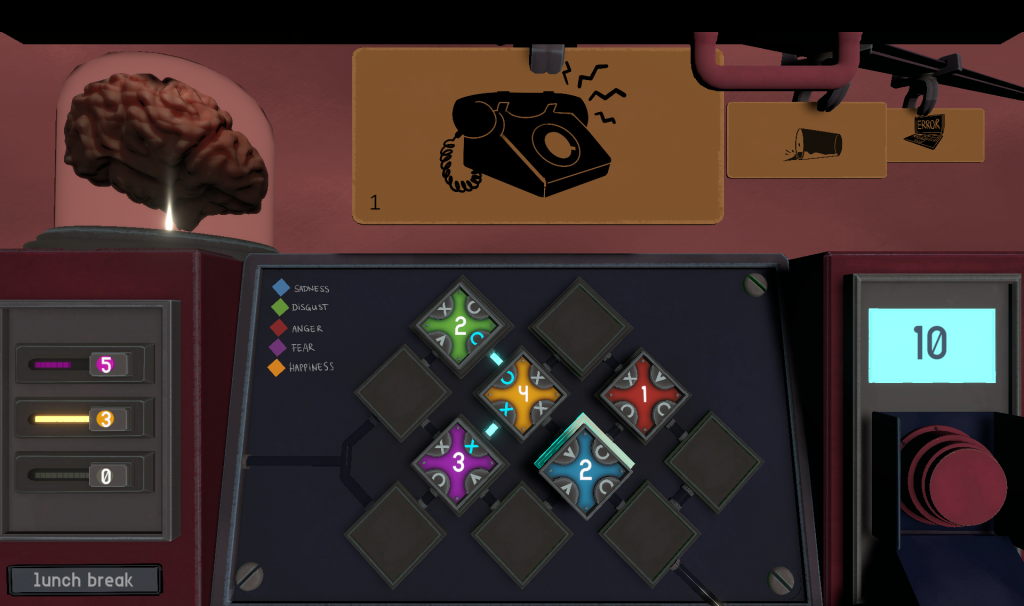
Duration: 3 weeks (April, 23. 2021 – May, 14. 2021)
Task: Create a game, following self chosen design patterns!
Chosen design patterns:
Click them for more informations!
Coaches: Prof. Susanne Brandhorst | Prof. Thomas Bremer
Team: Dala Klimek | Emma Louise Steiner | Lenja Raschke | Philipp Juhl
Ressources: Unity | Blender | Maya | Substance Painter
My Contributions: Gameplay Design | Gameplay Programming
Our Results: A playable build of a city building first person game
Game overview
In Mindwork the player is a new employee in the “Brain Factory”. It is his task to react to external sensations by placing appropriate emotion cards. In each round, a new sensation is perceived by the brain.
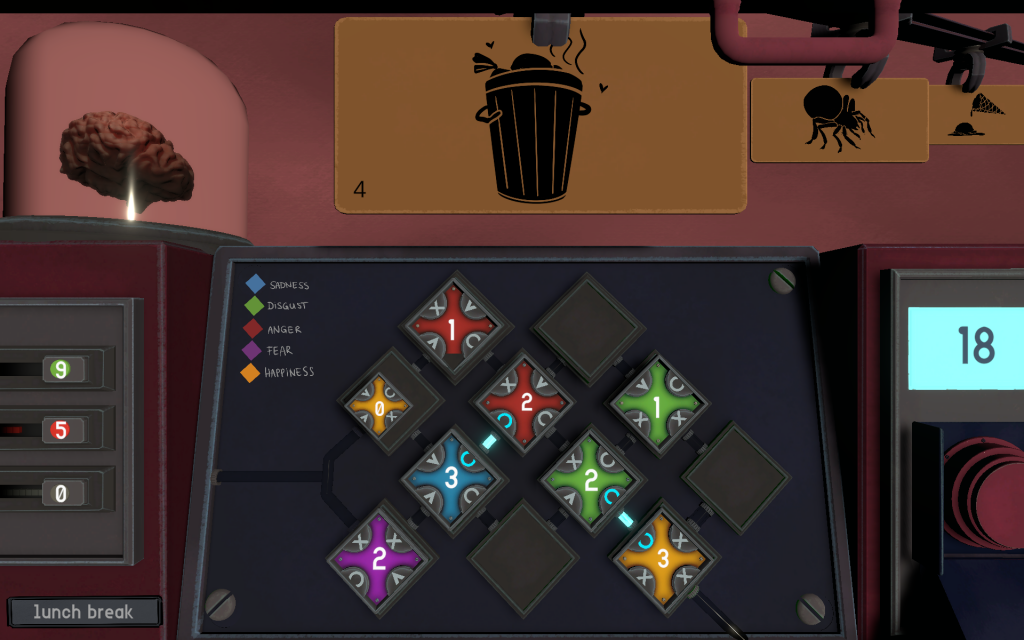
Whenever the required emotions to overcome a sensation are not met, the brain to the left of the screen will shrink. When the brain is so small, that it’s not visible anymore, the game is lost.
Gameplay
Sensations
The senstations are represented by black silhouettes, printed on cardboard sheets. They are delivered to the top of the screen.
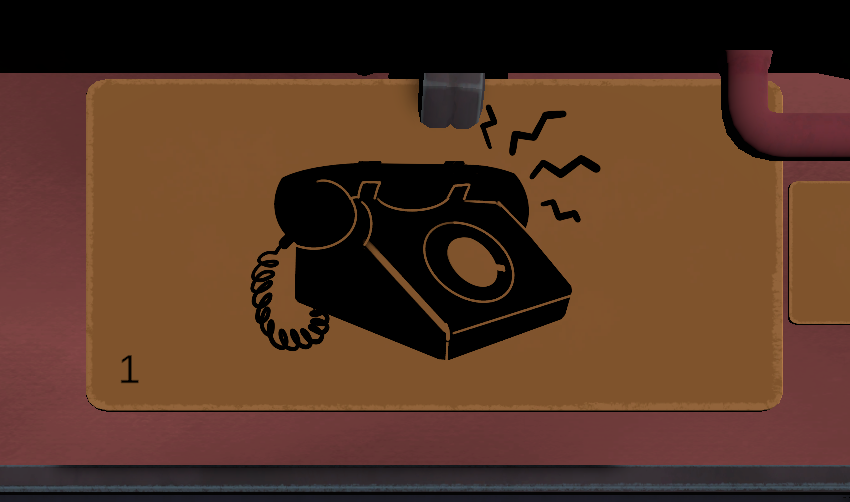
The terminal to the left of the screen is displaying the emotions required to overcome the current sensation. In this case, five points of fear and three points of happiness are required.

Emotions
There are five different emotions in Mindwork.

Sadness, disgust, anger, fear, and happiness. They are associated with a distinct color. Each emotion card bears the color of its emotion along with a number in the middle. This number is the value of the emotion.
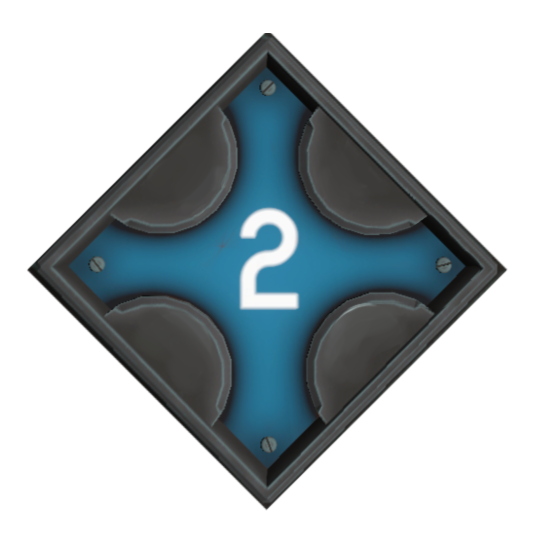
A sadness card with a value of two
The value of each emotion card on the board is added to a total value of each emotion.

Additionaly the emotion cards have a symbol on each of their four edges. There are three different symbols. An X, a semicircle and a triangle. If two of the same symbols are placed opposite to each other, the value of both cards will be increased by one. If all four symbols of a card are connected to matching symbols, the cards value is increased by four.
By placing the cards under consideration of this mechanic, the player can increase the total value of the emotions, in order to meet the required emotions of the current sensation.
Moving cards around the board
To match the symbols of adjacent cards with each other, they have to be moved around the board.
In each turn, the player has twenty actions at his disposal. Actions are:
- Move a card to an adjacent tile
- Swap two cards on adjacent tiles with each other
- Move a card from the reserve to the board or from the board to the reserve
By using these actions, the player can bring his emotion cards into positions, where they boost each others values.
Rewards
When all twenty actions are spend, the turn is over. Alternatively the player can end the turn earlier, by pressing the red button to the right.
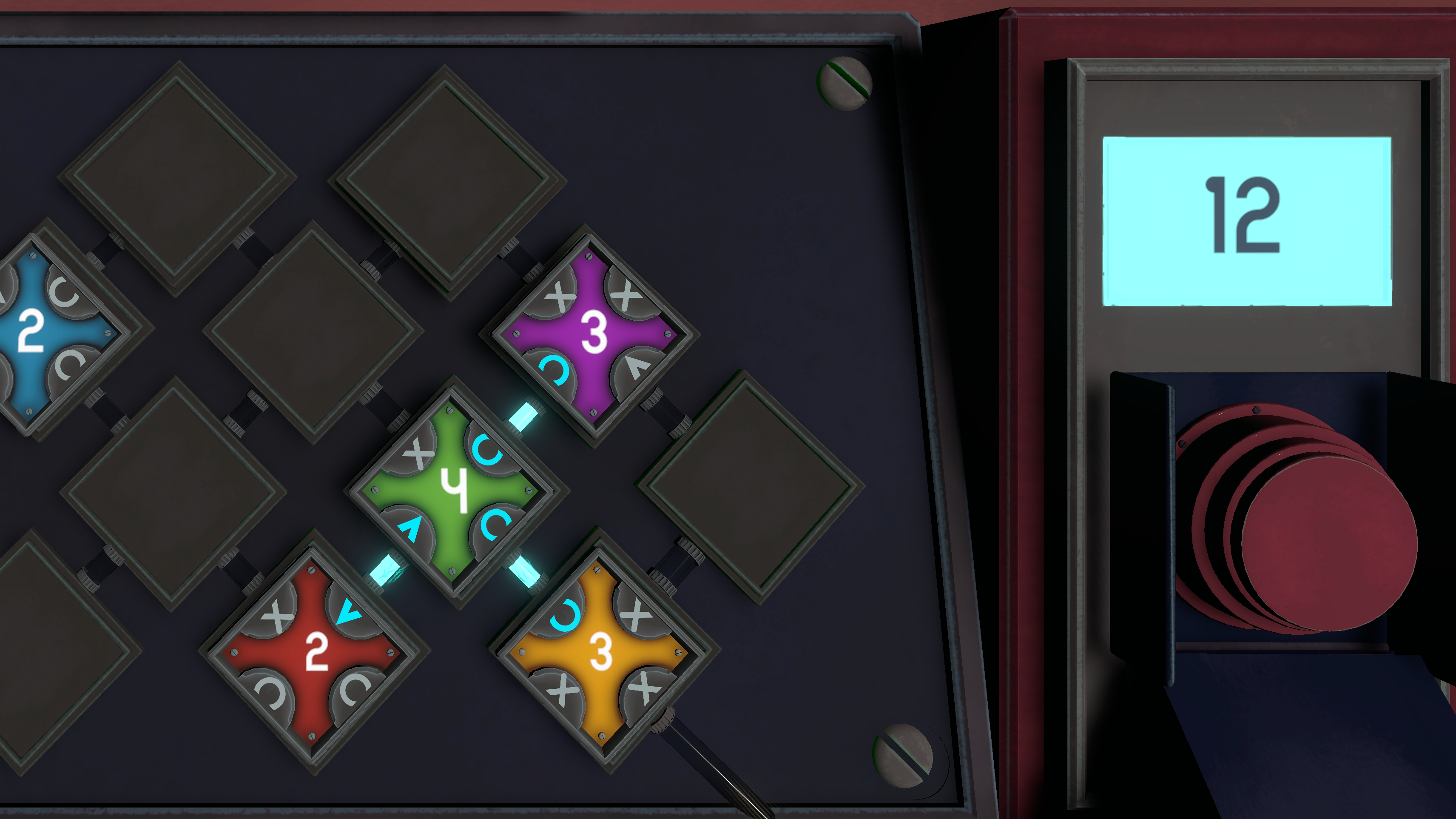
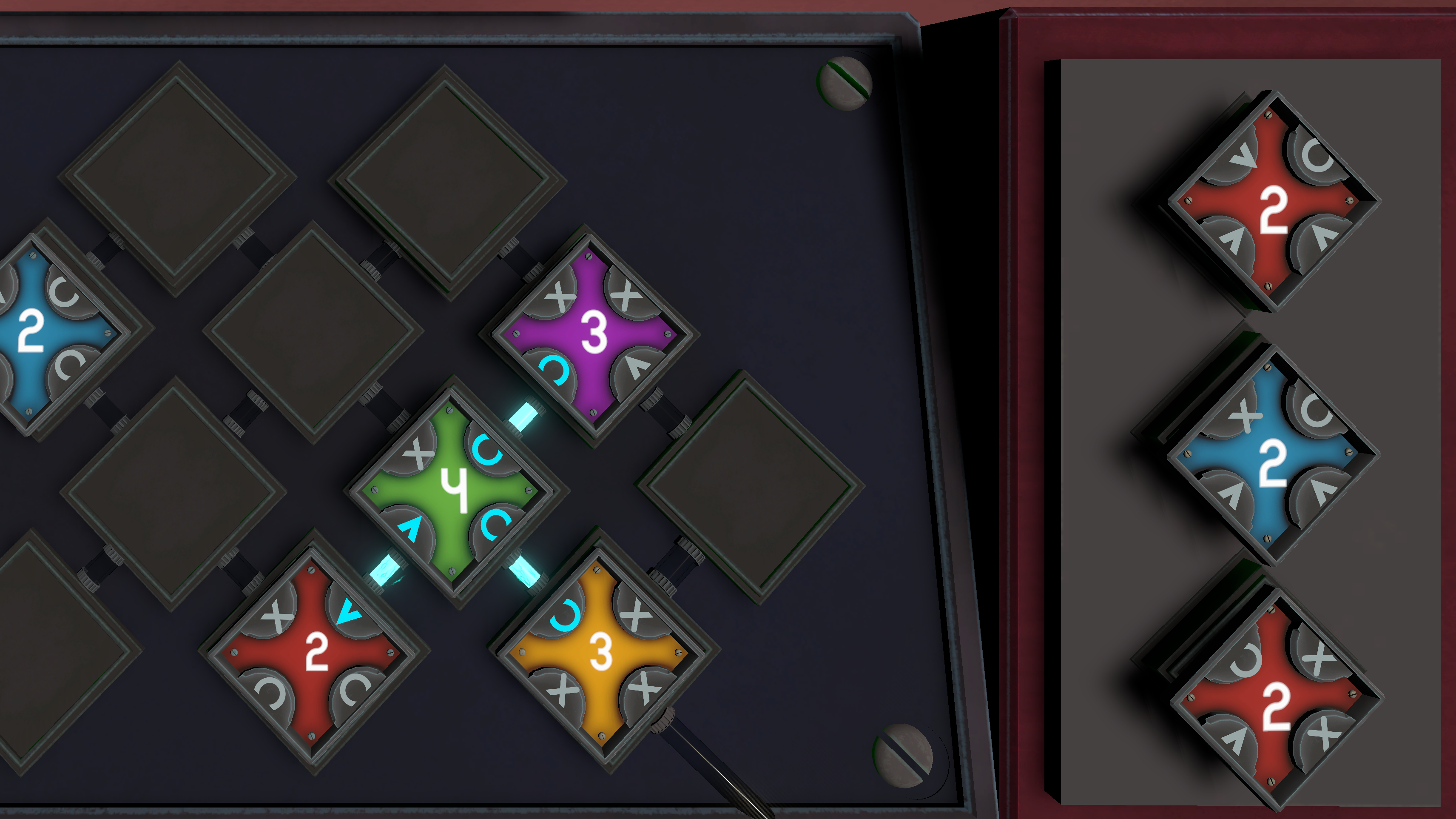
When the turn ends, the entire panel to the right will flip around and reveal three different cards.
The player can choose one of them, by clicking on it. The choosen card will be added to his available emotion cards. The remaining two cards will stay on the panel, while it flips back to its original state.
The value of the offered cards is determined by how well the player performed at the sensation. If all of the required emotion points are met with the card values on the board, the reward cards will have significantly better values, than if only half of the points where met.
When choosing one of the three cards, the player might consider which of the offered emotions he requires the most. He could also choose a card based on the symbols on its edges. If for example non of the players cards feature a triangle on the top left edge, he might be inclined to choose a card with that specific feature. Thereby he would increase his possibilitys to match symbols and boost the value of cards.
Predicting sensations

The sensations of the next turn and the turn after that are always displayed at the top. However, the exact value of emotions required to overcome those future sensations are not displayed. Therefore the player can only make assumptions of what emotions will be required in the future. If a spilled cup of water is the next sensation, he might assume that sadness will be required in the following turn. Or maybe anger?
Based on these considerations, the player might choose certain emotion cards over others. Additionaly, he could use his action points to move cards into positions in which the values of the next required emotion are boosted.
Visual Feedback
Mindwork is a relatively static game. Besides the emotion cards and the sensations at the top, there isn`t mutch movement to observe. Therefore it was important to us, that every action feels weightful.
This was achieved through two different means. When the player clicks on one of his cards, it will be elevated towards the player. This indicates, that the card is ready to be moved. Additionally the tile behind the card lights up in a light blue.

When an adjacent tile is clicked, in order to move the selected card there, that tile is highlighted in blue aswell. Both tiles will stay highlighted, until the movement action is completed.
Additionally to the visual feedback we implimented sound effects that trigger at the time, when a card is selected, and when its target tile is determined. The shortly following movement of the card to its destination, is also accompanied by a wooooshhh sound. It is supposed to emulate the sound of a heavy object that is quickly moved through the air.